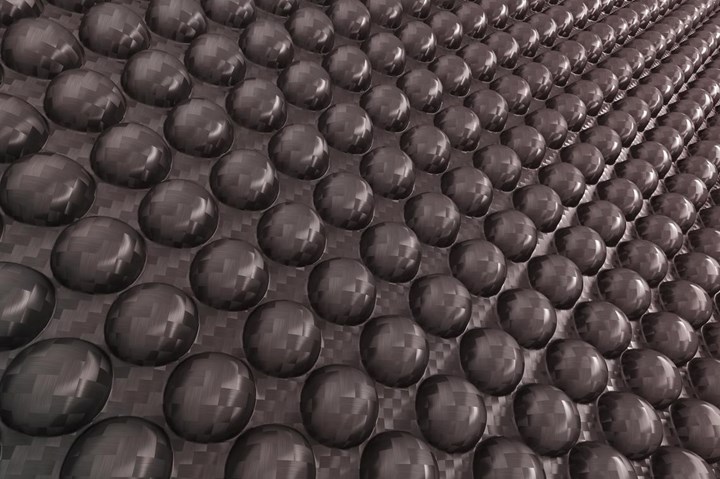UCalgary researchers turn Alberta oilsands bitumen into high-value carbon fibers
University spearheads three projects out of the 12 teams chosen for Phase II of the Carbon Fibre Challenge, with a new target to produce the carbon fibers from bitumen at a lab scale.

Photo Credit: Colourbox
Dr. Md Kibria, an assistant professor for the Department of Chemical and Petroleum Engineering at the Schulich School of Engineering for the University of Calgary (Calgary, Alberta, Canada), is leading one of three projects selected in the Carbon Fibre Challenge (CFGC) Phase II competition conducted by Alberta Innovates (Alberta, Canada) and the Clean Resource Innovation Network (CRIN, Canada).
The three-phase competition is aimed at accelerating the development of carbon fiber derived from Alberta’s vast supply of oilsands bitumen, a black viscous mixture of hydrocarbons obtained naturally or as a residue from petroleum distillation. Currently, Kibria and his team have been working with asphaltenes, — molecular substances found in crude oil — spinning the gooey substance together into strands finer than a human hair.
“Asphaltenes are commonly known as the ‘bottom of the barrel,’” says Kibria. “It’s the heavy fraction in bitumen which holds great promise to serve as a cheap feedstock for a wide variety of non-combustible, high-value products such as carbon fibers.”
The asphaltenes, says Kibria, are heated up to become a gel of sorts, which a spinner then winds into carbon fibers. The fibers then go through several steps to make them stronger, with some guessing and testing along the way. “We know that it’s feasible to make the fibers. Now the question is: How strong can we make it?” he questions.
Kibria hopes to create high-end carbon fibers that meet the standard for the automotive and airline industries, for which they can be used to create body components, wheels and rims, interior finishes and other products. He calls it a “win-win-win” situation because materials that don’t meet that high standard can still be used for other applications such as carbon fiber-reinforced concrete.
In addition to Dr. Md Kibria, two other Schulich professors, Dr. Simon Park, PhD, and Dr. Joanna Wong, Dr.sc.ETH — both with the Department of Mechanical and Manufacturing Engineering — are spearheading projects that also made it into the final 12 teams of the competition.
“One of the challenges associated with traditional carbon fiber-making is the high energy needed to convert polymer-based precursors to fibers,” Park says. “We are currently investigating new methods to generate carbon fibers by minimizing the energy usage through both chemical and electromagnetic treatments.”
In particular, his team is using both melt spinning and electrospinning processes to generate nano-scale and micro-scale fibers.
Wong, meanwhile, says her team’s approach “involves studying the chemical characteristics or particular fractions of different asphaltene samples. We are studying how their chemistries affect the rheology of the melts which, in turn, affects the quality of fibers that can be made.”
“Phase II of the Carbon Fibre Challenge moves us closer to realizing the potential of Bitumen Beyond Combustion,” says Alberta Innovates CEO Laura Kilcrease. “Alberta’s vast reserves of bitumen are the building blocks to create new low-carbon opportunities throughout the province.”
In total, the 12 teams that moved on in the competition received a share of $5.27 million to produce the carbon fibers at a lab scale and develop a process with line of sight to a demonstration plant that can be commercially scaled.
“Our target isn’t just to make a product,” says Kibria, who received $500,000 in funding for Phase II. “We want to make a carbon fiber that the end users need for different applications.”
Park obtained $485,000 in funding and Wong secured $217,000 for the second phase of the competition, which is expected to wrap up in December 2022.
Phase III, which will see the finalists demonstrate how they can manufacture the fibers in a way to enable commercial investment, is expected to run from January 2023 to December 2024. View a list of the 12 best projects selected by Alberta Innovates and a committee of experts here.
Related Content
Natural fiber composites: Growing to fit sustainability needs
Led by global and industry-wide sustainability goals, commercial interest in flax and hemp fiber-reinforced composites grows into higher-performance, higher-volume applications.
Read MoreTU Munich develops cuboidal conformable tanks using carbon fiber composites for increased hydrogen storage
Flat tank enabling standard platform for BEV and FCEV uses thermoplastic and thermoset composites, overwrapped skeleton design in pursuit of 25% more H2 storage.
Read MoreBio-based acrylonitrile for carbon fiber manufacture
The quest for a sustainable source of acrylonitrile for carbon fiber manufacture has made the leap from the lab to the market.
Read MoreInfinite Composites: Type V tanks for space, hydrogen, automotive and more
After a decade of proving its linerless, weight-saving composite tanks with NASA and more than 30 aerospace companies, this CryoSphere pioneer is scaling for growth in commercial space and sustainable transportation on Earth.
Read MoreRead Next
Plant tour: Daher Shap’in TechCenter and composites production plant, Saint-Aignan-de-Grandlieu, France
Co-located R&D and production advance OOA thermosets, thermoplastics, welding, recycling and digital technologies for faster processing and certification of lighter, more sustainable composites.
Read MoreDeveloping bonded composite repair for ships, offshore units
Bureau Veritas and industry partners issue guidelines and pave the way for certification via StrengthBond Offshore project.
Read MoreVIDEO: High-volume processing for fiberglass components
Cannon Ergos, a company specializing in high-ton presses and equipment for composites fabrication and plastics processing, displayed automotive and industrial components at CAMX 2024.
Read More

























